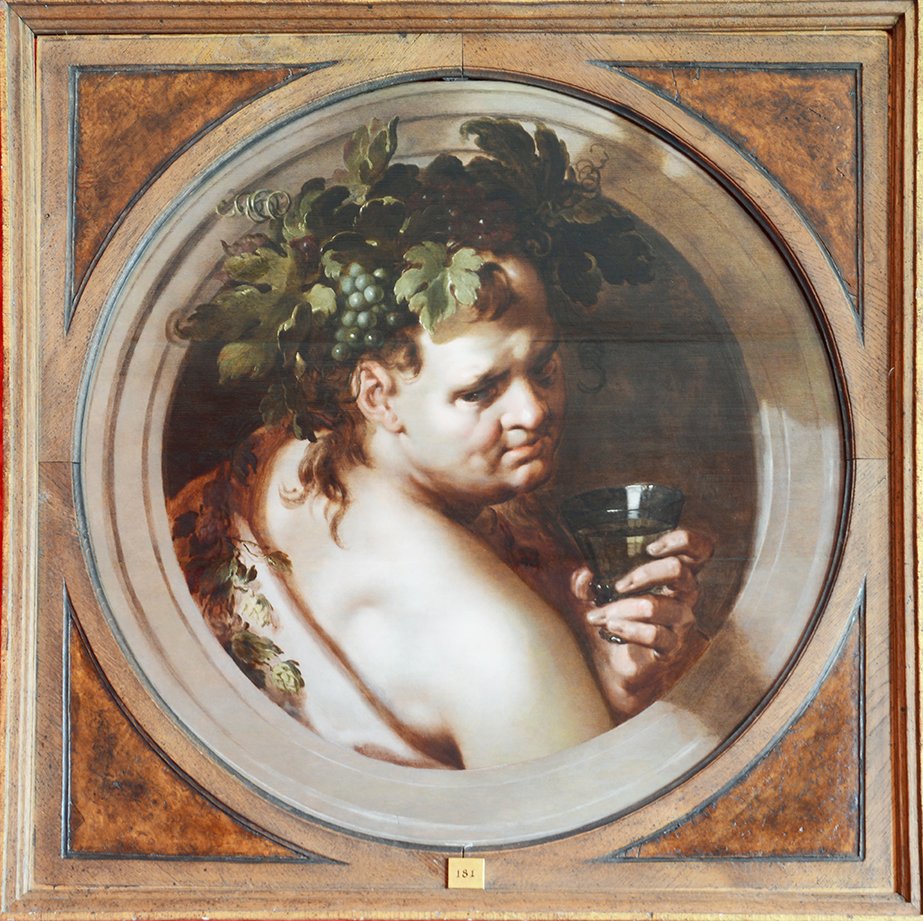
Bacchus
1564-1638
Head and shoulders, holding a glass, oil on panel in a painted stone circle. Tondo, 27 ins diameter
Collection Details
bought by Lord Faringdon from Colnaghi’s, in 1957.
Literature
S. Slive in the catalogue of the Franas Hals exhibition, Washington, London and Haarlem, October 1989-July 1990, under number 30, p.215, illus p.212, fig.30b, as unknown Netherlandish artist; M G Roethlisberger and M Bok, Abraham Bloemaert and his Sons, 1993, p. 39; M G Roethlisberger, ‘Early Abraham Bloemaert’ in Tableau, December 1994, pp.47–9, repd.
Exhibition Details
Manchester City Art Gallery, Between Renaissance and Baroque, 1965, No. 105 (exhibited with companion picture 184 (see below) as Frans Floris).
Companion Picture
see No.184.
Background
Until recently, the work of Bloemaert has been little known, and many of his earliest paintings recorded by his contemporaries are missing. In the past, the Buscot roundels have been attributed to Goltzius (Ceres) and Floris (Bacchus) but recent studies have placed them firmly within the body of Bloemaert’s work.
In his account of a visit in April 1590 to the home of Adriaan van der Burch, provincial court clerk at Utrecht, Aernout van Buchell records seeing ‘three paintings (tabulas) of Bacchus, Ceres and Venus by Blomart, but not known (nulla tamen nota)’. In a diary entry for 1591, van Buchell again singles out amongst the work of Bloemaert two roundels depicting Bacchus and Ceres, although he makes no mention of Venus. While Bacchus and Ceres are an established iconographic pair, they are far more commonly found together with Venus, united in a single composition or as a trilogy, and Roethlisberger (‘Early Abraham Bloemaert’, p.47) argues that the two panels of Bacchus and Ceres now in the Faringdon Collection at Buscot are indeed those referred to by van Buchell. Roethlisberger further suggests that the now missing Venus would have been a ‘frontal image of the same size in the middle, the figure, presumably bare-breasted, with or without Cupid, lit from the left like Bacchus and Ceres, who are turning with thoughtful glances toward this centre’. He considers the two tondi to be amongst Bloemaert’s earliest, and finest, works, probably painted in Utrecht in the late 1580s.
Both panels have been cleaned since their acquisition by the Faringdon Collection.
The Trustees of the Faringdon Collection 25.
All rights reserved.
